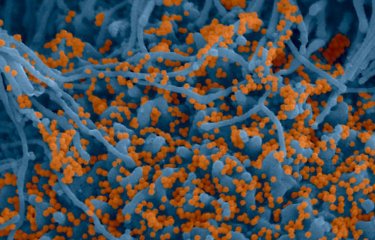-
News | 2016.12.09
How Helicobacter pylori survives gastric acidity
In a study published in PLoS Pathogens, researchers from the Institut Pasteur, in collaboration with the Institut Armand-Frappier (Canada), identified a novel nickel transporter in the gastric bacterial pathogen, Helicobacter pylori. This transporter is essential to allow H. pylori to survive the acidity of the stomach and thus to multiply and cause pathologies.The bacterium Helicobacter pylori...
-
News | 2016.12.01
Hepatitis B may infect twice more African babies than HIV
The number of newborns infected with Hepatitis B may be twice as high as HIV in sub-Saharan Africa.While the risk of mother-to-child transmission of Hepatitis B is well documented in Asia, data regarding the situation in Africa are still scarce. In an article published in the Alimentary Pharmacology & Therapeutics journal, Epidemiologists from Institut Pasteur, Ecole Pasteur/CNAM de Santé...
-
News | 2016.08.25
A new approach for deciphering complex immune responses
The response to infection is highly variable from one individual to another. The Milieu Intérieur consortium, coordinated by Prof. Matthew Albert (Immunobiology of dendritic cells Unit, Institut Pasteur / Inserm) and Dr Lluis Quintana-Murci (Human Evolutionary Genetics Unit, Institut Pasteur / CNRS) seeks to establish the parameters that characterize the immune system of healthy individuals and...
-
News | 2016.08.22
Tunneling nanotubes between neurons enable the spread of Parkinson's disease via lysosomes
Scientists from the Institut Pasteur have demonstrated the role of lysosomal vesicles in transporting α-synuclein aggregates, responsible for Parkinson's and other neurodegenerative diseases, between neurons. These proteins move from one neuron to the next in lysosomal vesicles which travel along the "tunneling nanotubes" between cells. These findings were published in The EMBO...
-
News | 2016.07.13
A new mechanism used by group B Streptococcus to evade the host immune system
Pathogenic bacteria produce a number of molecules that can be recognized by the innate immune system. These molecules associated with pathogens trigger an inflammatory response by stimulating specific signaling pathways in infected immune cells. Scientists from the Institut Pasteur and the CNRS, in cooperation with the University of Massachusetts Medical School, have demonstrated that group B...
-
News | 2016.07.07
Discovery of new strains of the HTLV-4 virus in hunters bitten by gorillas in Gabon
Scientists from the Institut Pasteur and the CNRS have identified two new strains of the HTLV-4 virus in two hunters who were bitten by gorillas in Gabon. These findings, published in the journal Clinical Infectious Diseases, support the notion that gorillas represent a major source of infectious agents that can be passed on to humans.Many of the viral pathogenic agents that have emerged in...
-
News | 2016.05.19
When Listeria attacks the intestinal microbiota
Although several Listeria strains can cause listeriosis, some are particularly virulent. This is because they secrete a toxin that damages the intestinal microbiota, preventing it from serving as a barrier and promoting infection. The results of this study, carried out by Javier Pizarro-Cerdà's team in the unit led by Pascale Cossart (Institut Pasteur, INSERM, INRA), were published in the...
-
News | 2016.05.12
Key cellular factors for chikungunya virus replication identified
Scientists from the Institut Pasteur, Inserm and the Max Planck Institute have used high-throughput screening to identify the cellular factors involved in the replication of chikungunya virus in human cells. These findings have revealed potential therapeutic targets that could help tackle this virus.Like all other viruses, chikungunya penetrates host cells and makes use of their cellular...
-
News | 2016.04.28
Discovery of the mechanism used to coordinate replication of the two Vibrio cholerae chromosomes
Bacterial genomes generally contain a single chromosome and one or more extrachromosal elements such as plasmids. The initiation of bacterial chromosome replication must be carefully checked to ensure that chromosome duplication occurs only once per cell cycle. The bacterial pathogen responsible for cholera epidemics, Vibrio cholerae, is distinctive in that it has two chromosomes. The teams led...
-
News | 2016.04.06
Airborne Bacterial Volatiles stimulate Fungal Growth
Scientists from the team led by Jean-Paul Latgé, Director of the Aspergillus Unit at the Institut Pasteur, have discovered a new communication pathway between two pathogens that colonize the same ecological niche and are both involved in acute pulmonary pathologies, particularly in patients with cystic fibrosis (the most common genetic disease in Europe).The scientists demonstrated that the...


